 W
WInnovation is the practical implementation of ideas that result in the introduction of new goods or services or improvement in offering goods or services. ISO TC 279 in the standard ISO 56000:2020 defines innovation as "a new or changed entity realizing or redistributing value". Others have different definitions; a common element in the definitions is a focus on newness, improvement, and spread of ideas or technologies.
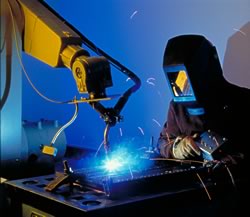 W
WAdvanced manufacturing is the use of innovative technology to improve products or processes, with the relevant technology being described as "advanced," "innovative," or "cutting edge." Advanced manufacturing industries "increasingly integrate new innovative technologies in both products and processes. The rate of technology adoption and the ability to use that technology to remain competitive and add value to define the advanced manufacturing sector."
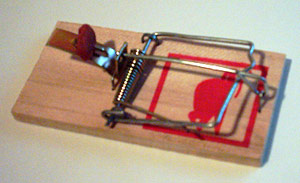 W
W"Build a better mousetrap, and the world will beat a path to your door" is a phrase attributed to Ralph Waldo Emerson in the late nineteenth century. The phrase is actually a misquotation of the statement:If a man has good corn or wood, or boards, or pigs, to sell, or can make better chairs or knives, crucibles or church organs, than anybody else, you will find a broad hard-beaten road to his house, though it be in the woods.
 W
WDesign management is a field of inquiry that uses project management, design, strategy, and supply chain techniques to control a creative process, support a culture of creativity, and build a structure and organization for design. The objective of design management is to develop and maintain an efficient business environment in which an organization can achieve its strategic and mission goals through design. Design management is a comprehensive activity at all levels of business, from the discovery phase to the execution phase. "Simply put, design management is the business side of design. Design management encompasses the ongoing processes, business decisions, and strategies that enable innovation and create effectively-designed products, services, communications, environments, and brands that enhance our quality of life and provide organizational success." The discipline of design management overlaps with marketing management, operations management, and strategic management.
 W
WDiffusion of innovations is a theory that seeks to explain how, why, and at what rate new ideas and technology spread. Everett Rogers, a professor of communication studies, popularized the theory in his book Diffusion of Innovations; the book was first published in 1962, and is now in its fifth edition (2003). Rogers argues that diffusion is the process by which an innovation is communicated over time among the participants in a social system. The origins of the diffusion of innovations theory are varied and span multiple disciplines.
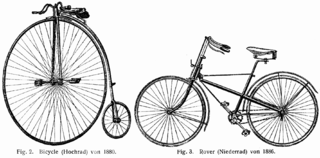 W
WIn business theory, a disruptive innovation is an innovation that creates a new market and value network and eventually displaces established market-leading firms, products, and alliances. The term was defined and first analyzed by Clayton M. Christensen and his collaborators beginning in 1995, and has been called the most influential business idea of the early 21st century. Lingfei Wu, Dashun Wang, and James A. Evans generalized this term to identify disruptive science and technological advances from more than 65 million papers, patents and software products that span the period 1954–2014. Their work was featured as the cover of the February 2019 issue of Nature and was selected as the Altmetric 100 most-discussed work in 2019.
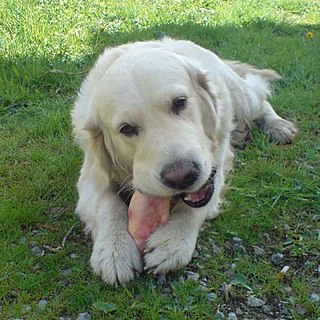 W
WEating your own dog food or “dogfooding” is the practice of using one's own products or services. This can be a way for an organization to test its products in real-world usage using product management techniques. Hence dogfooding can act as quality control, and eventually a kind of testimonial advertising. Once in the market, dogfooding can demonstrate developers confidence in their own products.
 W
WAn enabling technology is an invention or innovation that can be applied to drive radical change in the capabilities of a user or culture. Enabling technologies are characterized by rapid development of subsequent derivative technologies, often in diverse fields. See General purpose technology.
 W
WEstablished in 1998, The FAB Awards is an international awards programme focused on food and beverage brands.
 W
WA food truck is a large motorized vehicle or trailer, equipped to cook, prepare, serve, and/or sell food. Some, including ice cream trucks, sell frozen or prepackaged food; others have on-board kitchens and prepare food from scratch, or they heat up food that was prepared in a brick and mortar commercial kitchen. Sandwiches, hamburgers, french fries, and other regional fast food fare is common. By the early 2010s, amid the pop-up restaurant phenomenon, food trucks offering gourmet cuisine, and a variety of specialties and ethnic menus became particularly popular. Food trucks may also sell cold beverages such as soda pop and water. Food trucks, along with food booths and food carts, are major components of the street food industry that serves an estimated 2.5 billion people every day.
 W
WInnovation is the practical implementation of ideas that result in the introduction of new goods or services or improvement in offering goods or services. ISO TC 279 in the standard ISO 56000:2020 defines innovation as "a new or changed entity realizing or redistributing value". Others have different definitions; a common element in the definitions is a focus on newness, improvement, and spread of ideas or technologies.
 W
WGlobal Banking and Finance Awards was started in 2011 by the United Kingdom based Global Banking & Finance Review magazine to recognize notable changes happening in the global financing community. The awards are presented annually and they reflect the innovative, progressive, and inspirational changes taking place within the global financial sector, including banking, corporate finance, Islamic finance, inward investment, tax and accounting, asset management, mergers and acquisitions.
 W
WThe Gartner hype cycle is a graphical presentation developed, used and branded by the American research, advisory and information technology firm Gartner to represent the maturity, adoption, and social application of specific technologies. The hype cycle claims to provide a graphical and conceptual presentation of the maturity of emerging technologies through five phases. The model is not perfect and research so far shows possible improvements for the model.
 W
WIdeas are abstract concepts, in common usage and according to philosophy. Also in philosophy, ideas can also be mental representational images of some object. Many philosophers have considered ideas to be a fundamental ontological category of being. The capacity to create and understand the meaning of ideas is considered to be an essential and defining feature of human beings. In a popular sense, an idea arises in a reflexive, spontaneous manner, even without thinking or serious reflection, for example, when we talk about the idea of a person or a place. A new or an original idea can often lead to innovation.
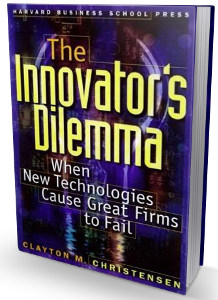 W
WThe Innovator's Dilemma: When New Technologies Cause Great Firms to Fail, first published in 1997, is the best-known work of the Harvard professor and businessman Clayton Christensen. It expands on the concept of disruptive technologies, a term he coined in a 1995 article Disruptive Technologies: Catching the Wave.
 W
WThe International Innovation Index 2021 is a global index measuring the level of innovation of a country, produced jointly by The Boston Consulting Group (BCG), the National Association of Manufacturers (NAM), and The Manufacturing Institute (MI), the NAM's nonpartisan research affiliate. NAM describes it as the "largest and most comprehensive global index of its kind".
 W
WIntuition is the ability to acquire knowledge without recourse to conscious reasoning. Different fields use the word "intuition" in very different ways, including but not limited to: direct access to unconscious knowledge; unconscious cognition; inner sensing; inner insight to unconscious pattern-recognition; and the ability to understand something instinctively, without any need for conscious reasoning.
 W
WWilliam Kamkwamba is a Malawian inventor, engineer, and author. He gained fame in his country in 2001 when he built a wind turbine to power multiple electrical appliances in his family's house in Wimbe, 32 km (20 mi) east of Kasungu, using blue gum trees, bicycle parts, and materials collected in a local scrapyard. Since then, he has built a solar-powered water pump that supplies the first drinking water in his village and two other wind turbines, the tallest standing at 12 meters (39 ft), and is planning two more, including one in Lilongwe, the political capital of Malawi.
 W
WConvenient procedures, products and services are those intended to increase ease in accessibility, save resources and decrease frustration. A modern convenience is a labor-saving device, service or substance which make a task easier or more efficient than a traditional method. Convenience is a relative concept, and depends on context. For example, automobiles were once considered a convenience, yet today are regarded as a normal part of life.
 W
WThe Museum of Failure is a collection of failed products and services. The touring exhibition showcases failures to provide visitors a learning experience about the important role of failure for innovation and to encourage organizations to become better at learning from failure. The exhibition first opened on June 7, 2017 in Helsingborg, Sweden. The exhibit reopened at Dunkers Kulturhus on June 2, 2018 before closing in January 2019. A temporary exhibit opened in Los Angeles in December 2017. The Los Angeles museum is on Hollywood Blvd. in the Hollywood & Highland Center. The exhibit opened January - March 2019 at Shanghai, No.1 Center (上海第一百货). And in December 2019 a smaller version opened in Paris, France at the Cité des Sciences et de l'Industrie along with other interesting failure-related exhibitions for the "Festival of Failures".
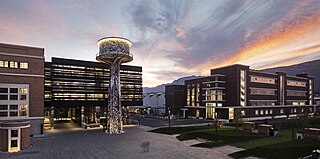 W
WNOI Techpark is the science and technology park of South Tyrol that hosts 4 research institutes, 4 Faculties of the Free University of Bozen-Bolzano, 40 scientific laboratories, 40 companies and 30 start-ups. Inaugurated in Bolzano in October 2017, it is the result of an urban redevelopment project. The structure is managed by NOI Spa, In-House company of the Autonomous Province of Bolzano.
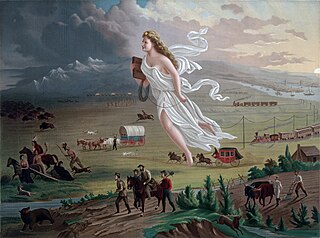 W
WProgress is the movement towards a refined, improved, or otherwise desired state. In the context of progressivism, it refers to the proposition that advancements in technology, science, and social organization have resulted, and by extension will continue to result, in an improved human condition; the latter may happen as a result of direct human action, as in social enterprise or through activism, or as a natural part of sociocultural evolution.
 W
WResearch and development, known in Europe as research and technological development (RTD), is the set of innovative activities undertaken by corporations or governments in developing new services or products and improving existing ones. Research and development constitutes the first stage of development of a potential new service or the production process.
 W
WResearch Policy is a peer-reviewed academic journal published by Elsevier on behalf of the Science Policy Research Unit (SPRU). It was established by British economist Christopher Freeman in 1971 and is regarded as the leading journal in the field of innovation studies. It is listed as one of the 50 journals used by the Financial Times to compile its business-school research ranks.
 W
WThe service blueprint is a technique originally used for service design, but has also found applications in diagnosing problems with operational efficiency. The technique was first described by G. Lynn Shostack, a bank executive, in the Harvard Business Review in 1984. The service blueprint is an applied process chart which shows the service delivery process from the customer's perspective. The service blueprint has become one of the most widely used tools to manage service operations, service design and service positioning.